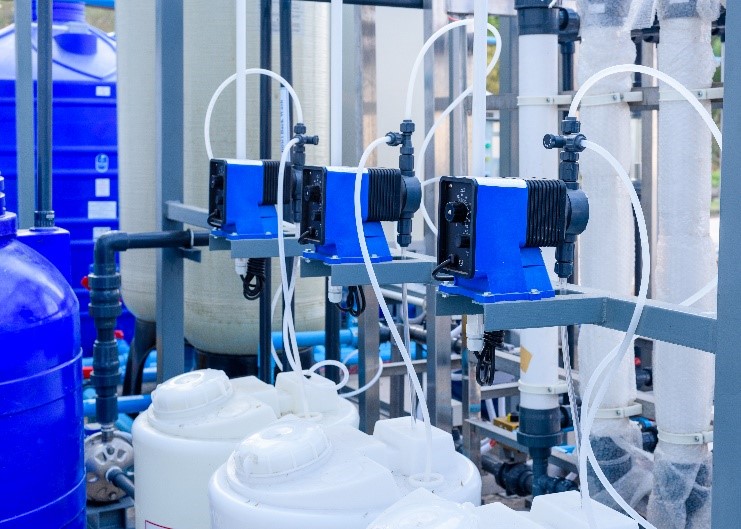
Reverse Osmosis (RO) is a widely used water purification technology that plays a crucial role in providing clean and safe drinking water. In the process of RO, water is passed through a semi-permeable membrane to remove impurities, contaminants, and particles. To enhance the efficiency and lifespan of the RO system, various chemicals are employed. In this comprehensive guide, we will delve into the significance of RO chemicals, their types, and their respective roles in water treatment.
I. The Basics of Reverse Osmosis:
To comprehend the necessity of RO chemicals, it’s essential to understand the fundamentals of the reverse osmosis process. RO is a filtration method that uses a partially permeable membrane to separate unwanted substances from water. As water passes through the membrane, contaminants are left behind, resulting in purified water on the other side. This process is highly effective in removing particles, ions, and other impurities.
II. The Importance of RO Chemicals:
RO systems are susceptible to fouling, scaling, and biological growth, which can impact their performance and efficiency. RO chemicals are employed to mitigate these issues and ensure the longevity and effectiveness of the system. These chemicals aid in preventing scaling, cleaning the membranes, and inhibiting microbial growth, contributing to the overall reliability of the RO process.
III. Types of RO Chemicals:
- Antiscalants:
- Antiscalants are crucial in preventing scaling, a common issue in RO systems. They work by binding with scale-forming ions, preventing them from precipitating and forming scale on the membrane surface.
- Membrane Cleaners:
- Over time, membranes can accumulate deposits and fouling, reducing their efficiency. Membrane cleaners are chemicals designed to remove these deposits and restore the membrane’s performance.
- Biocides:
- Biological growth, such as bacteria and algae, can adversely affect RO systems. Biocides are employed to control and inhibit the growth of microorganisms, ensuring the water remains free from contaminants.
- pH Adjusters:
- Maintaining the proper pH level is essential for the efficient operation of RO systems. pH adjusters are used to control and optimize the pH of the water, preventing corrosion and ensuring the membrane’s stability.
IV. The Role of RO Chemicals in Water Treatment:
- Preventing Scaling:
- Antiscalants play a pivotal role in preventing the formation of scale on the membrane surface. By inhibiting the precipitation of scale-forming ions, these chemicals help maintain the efficiency of the RO system.
- Cleaning Membranes:
- Membrane cleaners are essential for periodic maintenance, as they remove accumulated deposits and fouling on the membranes. This cleaning process restores the membrane’s permeability and extends its lifespan.
- Inhibiting Biological Growth:
- Biocides are employed to prevent the growth of bacteria, algae, and other microorganisms that can colonize the membrane surface. This inhibits biological fouling and ensures the purity of the treated water.
- pH Optimization:
- pH adjusters contribute to the overall stability of the RO system by maintaining the proper pH level. This not only prevents corrosion but also ensures that the membranes function optimally.
V. Considerations for RO Chemical Application:
- Proper Dosage:
- Achieving the desired results requires the accurate dosage of RO chemicals. Proper monitoring and adjustment of chemical dosages are essential to avoid overuse or underuse.
- Regular Monitoring:
- Regular monitoring of water quality parameters, including scaling potential, fouling, and microbial growth, is crucial. This allows for timely adjustments to the chemical treatment regimen.
- Compatibility:
- Ensuring the compatibility of RO chemicals with system components is essential to prevent any adverse reactions. Chemicals should be selected based on the specific requirements and materials used in the RO system.
VI. Conclusion:
In conclusion, RO chemicals play a pivotal role in maintaining the efficiency and reliability of reverse osmosis systems. From preventing scaling and fouling to inhibiting microbial growth, these chemicals contribute significantly to the longevity of the membranes and the quality of treated water. Understanding the types and roles of RO chemicals is essential for water treatment professionals and system operators to ensure the optimal performance of RO systems in providing safe and clean drinking water.



